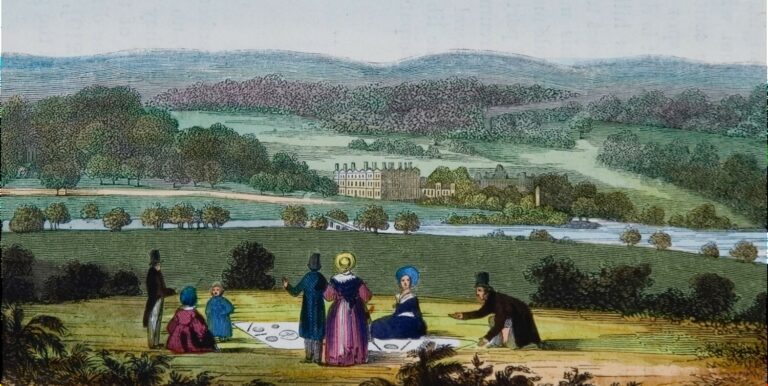Stourhead Garden was designed by Henry Hoare, known as Henry the Magnificent, the then owner of the Stourhead Estate, between about 1746 and 1765.
Henry chose to make his new garden in a steep sided boggy valley that could not be seen from the house. Can you imagine the reaction of early visitors, used to very formal 17th century gardens, on rounding a bend in the path and seeing the valley below them and the Temple of Apollo at eye level on the opposite slope?
This view demonstrates many principles of the English landscape garden. Visitors can see the temple but not how to reach it. They can also see some water in the bottom of the valley, with a stone bridge crossing it, but at this point cannot tell whether it is a river or a lake. To find the answers they have to keep walking and exploring.
Continuing along the path, the slopes either side clothed in well pruned laurel, another viewpoint is reached. Here, the Pantheon, based on the one in Rome although only a quarter of the size, is seen across what is now clearly a lake, however the extent of the water cannot be judged and again there is no obvious way to reach the temple. More walking is required.
Incidentally, at this point the Temple of Apollo is no longer visible. This is not a garden where everything can be seen at once.
On reaching the bottom of the slope and the lakeside, the path continues anti-clockwise, revealing an arm of the lake that could not be seen before. A small dam crosses this by Diana’s Basin, a still pool, and Lily Lake.
The path then descends further into the Grotto, before emerging near to Watch Cottage, and shortly after reaching the Pantheon. An iron bridge crosses another unexpected arm of the lake before the path goes across the top of the main dam.
Soon a set of steps appears which takes the visitor over the previously hidden road and up to the Temple of Apollo. At last! A cobbled path then passes under the road, a feature known as a souterrain, and the visitor can see the Temple of Flora on the opposite side of the lake.
Passing the stone bridge previously seen from above the circuit of this quintessential English landscape garden is completed, and the visitor can reflect on the words of the poet Alexander Pope in his Epistle IV To the Right Honourable RICHARD Earl of BURLINGTON in 1831:
“He gains all points, who pleasingly confounds,
Surprizes, varies, and conceals the Bounds.
Consult the Genius of the Place in all;”
But it is over 250 years since Henry the Magnificent started making this garden.
Has it changed much in that time? Would he recognise it now?





